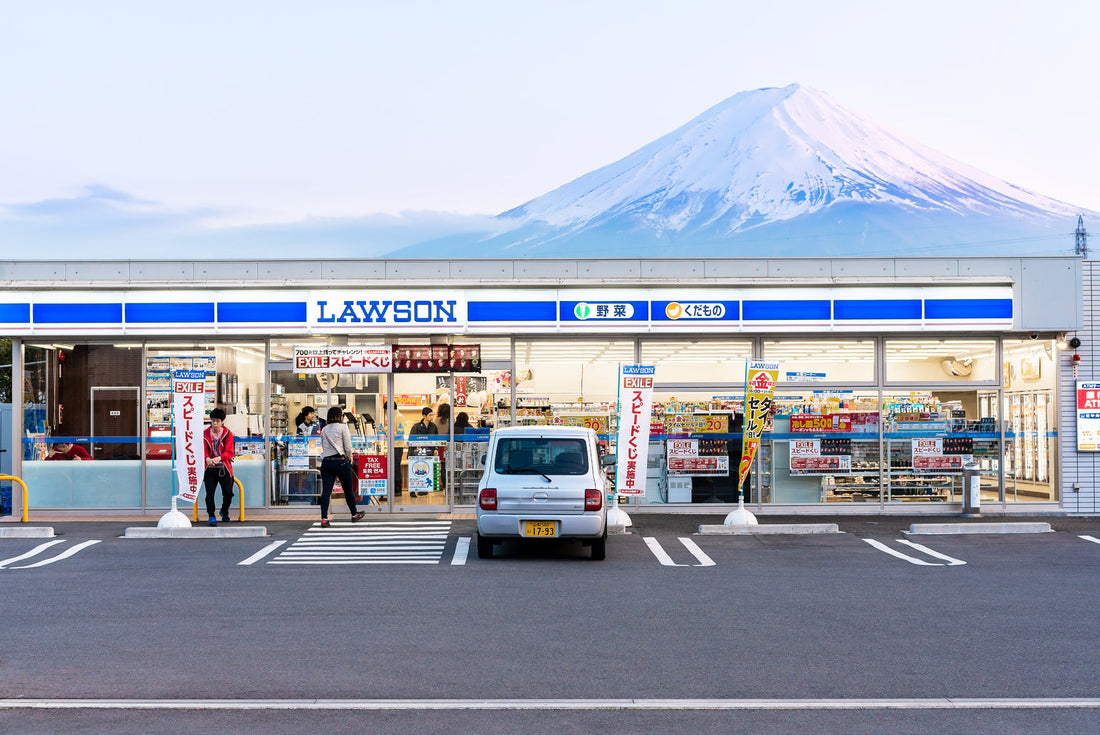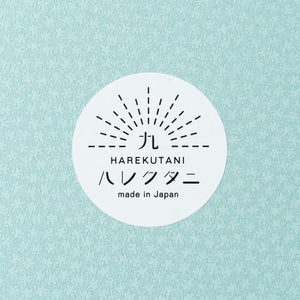
The Konbini: The Beating Heart of Everyday Life in Japan
Share
The Konbini: The Beating Heart of Everyday Life in Japan
Step into any Japanese city, and you’ll notice them right away. The glowing signs of Lawson, FamilyMart, and 7-Eleven are scattered across neighbourhoods like friendly lanterns guiding you home. Known as konbini (short for “convenience store”), these little hubs of daily life are far more than places to grab a drink or a snack. For millions of people in Japan, the konbini is an extension of home, office, and sometimes even the post office. It’s a cultural institution woven tightly into the rhythm of everyday living.
Unlike the convenience stores in many other countries, Japanese konbini are not merely pit stops. They are reliable lifelines. They offer freshly prepared meals, bill payment services, ATMs, parcel delivery, ticket reservations, seasonal gifts, cosmetics, and even limited-edition merchandise. The sheer variety and quality make the konbini a unique symbol of Japanese culture. If you want to understand what makes Japan tick, you have to understand the role of the konbini.
A Konbini on Every Corner
One reason the konbini is so integral to Japanese daily life is its accessibility. In Tokyo or Osaka, you might find one on nearly every street corner. Rural towns may have fewer, but even there, a single konbini can serve as a vital community hub. The number of stores across Japan is staggering, with tens of thousands nationwide. This density ensures that no matter where you are, you’re never far from hot coffee, a bento box, or even a quick place to print documents.
This accessibility shapes habits. Workers pick up breakfast on the way to the office. Students grab snacks between cram school sessions. Families rely on prepared dinners during busy weeks. Travellers duck in for an umbrella when the rain inevitably catches them off guard. In short, the konbini is always there when you need it, and always stocked with what you didn’t realise you needed until the moment came.
The Food That Defines the Konbini
One of the biggest surprises for first-time visitors to Japan is the quality of konbini food. Forget the stereotype of limp sandwiches and stale coffee. Here, the shelves are lined with onigiri (rice balls wrapped neatly in seaweed), steaming bowls of ramen, fried chicken that rivals any fast-food chain, and delicate pastries that taste fresh out of a bakery. Seasonal menus change throughout the year, offering strawberry desserts in spring, cooling noodles in summer, chestnut treats in autumn, and warming stews in winter.
For office workers rushing between meetings, the konbini bento box is a saviour. Affordable, filling, and often surprisingly well-balanced, these ready-made meals keep people moving. Late-night students hunched over textbooks know the comfort of an instant noodle cup paired with a chilled bottle of green tea. Even tourists quickly fall in love with the idea of grabbing a matcha latte or limited-edition snack from the konbini before hopping on a train.
It’s not just food, though. The beverage section deserves its own spotlight. Rows of canned coffee, sparkling teas, fruit sodas, and even craft beers create a colourful display. Japanese konbini excel at offering regional specialities too, so you may find yuzu-flavoured drinks in Shikoku or Hokkaido-made dairy products in Sapporo. Every visit feels like a small culinary adventure.
More Than Just Shopping
The role of the konbini extends far beyond selling snacks. Many Japanese households treat them as multifunctional service centres. Need to pay your electricity bill? Head to the konbini. Want to pick up an online order? Your parcel can be collected there. Tickets to a concert, theme park, or even a sumo match? That’s right—book them at the konbini kiosk.
This integration into daily tasks makes the stores indispensable. They reduce the need for multiple errands by consolidating everyday chores into one stop. It’s not an exaggeration to say that Japanese society has been shaped by the presence of these stores. They save time, they simplify life, and they provide peace of mind.
For younger generations, they are also meeting points. Friends might gather at a FamilyMart before heading to karaoke. Couples on a budget date might pick up snacks and sit by the river, enjoying an affordable evening out. Even in emergencies—like during natural disasters—konbini remain open, distributing food and essentials when other businesses shut their doors.
A Cultural Mirror
The konbini is more than a shop; it is a mirror reflecting Japanese values. Cleanliness, efficiency, politeness, and seasonal awareness all find their expression within its walls. Shelves are immaculate. The staff greet every customer with a cheerful irasshaimase. New products appear regularly to match festivals, holidays, or weather shifts.
Take New Year, for example. Konbini sell special osechi meals and traditional snacks designed for the holiday season. During Valentine’s Day, shelves overflow with chocolates and sweets. In summer, you’ll find cooling desserts like kakigori or seasonal drinks featuring citrus and melon. This seasonal rotation not only drives sales but also connects customers with the flow of Japanese life.
There’s also a strong sense of trust. In Japan, konbini are open 24 hours a day, and yet crime levels remain low compared to international standards. People feel safe stopping by at any time, whether it’s a lone commuter at midnight or a family on an early-morning road trip. The stores become anchors of safety and stability in a busy, unpredictable world.
The International Fascination
It’s not surprising that the Japanese konbini has gained a cult following among international visitors. Travel blogs, YouTube channels, and TikTok feeds are full of foreigners marvelling at the food, the quirky limited-edition items, and the overall efficiency. Many travellers claim that visiting a konbini was one of the highlights of their trip, right up there with shrines, temples, and castles.
This fascination has even spread abroad. Japanese snacks, drinks, and cosmetics inspired by konbini shelves are increasingly available online and in specialty stores worldwide. Businesses outside Japan are learning from the model too, trying to replicate the balance of convenience, quality, and cultural connection that defines the Japanese konbini.
Konbini in Everyday Routine
To understand how deeply embedded the konbini is in Japanese life, consider a typical day. A salaryman stops by a 7-Eleven for a hot coffee and onigiri before boarding his morning train. At lunch, he grabs a quick bento and checks the in-store ATM. In the evening, he swings past the konbini to pick up beer and fried chicken to unwind after work. Meanwhile, a mother stops at her local FamilyMart to pay a water bill and collect her child’s parcel delivery. A student pops in for stationery before a cram school session, adding a melon bread to her purchase.
These small, ordinary interactions paint a bigger picture: the konbini is not an occasional treat, but an integral part of daily existence. People rely on it in the same way they rely on their smartphones or the train system.
A Symbol of Japanese Way of Life
The Japanese way of life values balance—between tradition and modernity, work and leisure, community and individual needs. The konbini embodies this balance. It provides modern convenience without losing touch with cultural traditions. It offers affordable meals while still paying attention to seasonal detail and presentation. It acts as a private space for grabbing a quick bite, yet also serves as a shared space where communities gather.
It’s a symbol of how Japan manages to weave efficiency into everyday life while still celebrating small joys. A warm nikuman bun in winter. A limited-edition sakura drink in spring. The friendly bow of the staff as you leave. All these moments are ordinary, yet they carry a quiet magic that defines life in Japan.
Konbini in the Future
As lifestyles shift and technology advances, the konbini continues to adapt. Self-checkout systems are spreading, eco-friendly packaging is becoming more common, and digital services are expanding. Yet at their core, konbini remain what they have always been: neighbourhood anchors offering reliability, comfort, and a little surprise each time you step inside.
Even as Japan faces challenges like ageing populations and rural depopulation, the konbini remains a constant presence. In some towns, it is not only a place to shop but a lifeline for elderly residents who may otherwise struggle to access services. Its role as a connector of people and provider of daily necessities ensures it will remain vital for years to come.
Why the Konbini Matters to Us
At Konbini.com.au, we celebrate this part of Japanese culture because it represents so much of what we love about Japan. When we source Japanese snacks, tea, cosmetics, and ceramics, we think about the everyday joy of visiting a konbini in Japan. It’s about convenience, yes, but also about discovery. Each visit can bring a new flavour, a seasonal surprise, or a reminder of how thoughtful Japanese design and culture really are.
For those who have visited Japan, our aim is to bring a slice of that daily magic back home. And for those who haven’t yet experienced the joy of a late-night konbini run, our products offer a little glimpse into why these stores mean so much to Japanese people.
Final Thoughts
The konbini is not just a convenience store. It is part of the fabric of Japanese life, a place where efficiency meets culture, and where small daily rituals bring comfort and connection. Whether you’re picking up a warm bun on a chilly night, paying your bills, or discovering a quirky limited-edition snack, you’re experiencing something more than shopping. You’re stepping into an institution that defines the Japanese way of life.
The next time you think of Japan, don’t just picture temples, sushi, or cherry blossoms. Picture the soft glow of a konbini sign on a quiet street, welcoming everyone who walks through its doors. That glow is more than light. It’s the heartbeat of everyday Japan.












